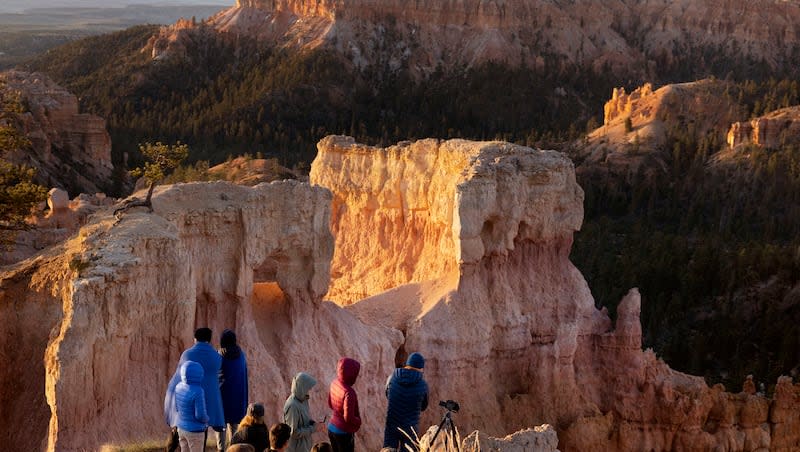National parks to visit if you’re new to hiking

Hiking has multiple benefits, from getting physical exercise to feeling an improvement in mental health, according to the National Park Service.
You can receive these benefits even on a short hike. These hikes are more manageable and cater to individuals who are new to hiking, families with young children, those with health conditions and individuals with busy schedules.
The best national parks for new hikers
Throughout the National Park Service, there are over 21,000 miles of trails to explore. Many of these trails are short but still offer spectacular views. Consider going on more than one hike if you’re up for it!
Find five great national parks and some of their easier hikes below, with specifics on each hike taken from the National Park Service and AllTrails.
Bryce Canyon National Park
Bryce Canyon National Park, found in Utah, is famous for its tall, red rock formations called hoodoos. Visitors come from all over to see its scenery, explore trails or go stargazing.
Sunset Point to Sunrise Point: Pets allowed, 20 to 60 minutes, 1.1 miles, 82-foot elevation gain.
Mossy Cave Trail: No pets, 30 to 60 minutes, 0.9 miles, 121-foot elevation gain.
Bristlecone Loop Trail: No pets, 30 to 60 minutes, one mile, 88-foot elevation gain.
Grand Canyon National Park
In Arizona, Grand Canyon National Park contains deep and incredibly long canyons formed by the Colorado River. People visit to hike, raft or simply enjoy the landscape.
Yavapai Point via Rim Trail: No pets, 1.7 miles, 82-foot elevation gain, accessible for wheelchairs.
Shoshone Point: Pets allowed, 45 minutes, 2.1 miles, 154-foot elevation gain.
Mather Point via Visitor Center: No pets, 0.6 miles, less than 30 minutes, 13-foot elevation gain, accessible for wheelchairs.
Olympic National Park
Olympic National Park, located in Washington state, offers a mix of landscapes, including coastlines, rainforests and meadows. Visitors can hike, relax in hot springs and enjoy nature.
Marymere Falls Trail: No pets, 49 minutes, 1.7 miles, 314-foot elevation gain.
Hall of Mosses Trail: No pets, 24 minutes, 1.1 miles, 82-foot elevation gain.
Sol Duc Falls Trail: No pets, 42 minutes, 1.6 miles, 226-foot elevation gain.
Shenandoah National Park
Shenandoah National Park, found in Virginia, is famous for its beautiful mountains and forests. Visitors can hike, drive along Skyline Drive for great views, and see lots of wildlife and waterfalls.
Blackrock Summit via Trayfoot Mountain and Appalachian Trail: Pets allowed, 1.1 miles, 180-foot elevation gain.
Story of the Forest Trail: No pets, 42 minutes, 1.8 miles, 180-foot elevation gain.
Limberlost Trail: No pets, 31 minutes, 1.4 miles, 101-foot elevation gain.
Yosemite National Park
Yosemite National Park, located in California’s Sierra Nevada, has big cliffs, waterfalls and giant trees. People visit to hike to landmarks like Half Dome and enjoy the Yosemite Valley.
Lower Yosemite Falls Trail: Pets allowed, 24 minutes, 1.2 miles, 55-foot elevation gain, accessible for wheelchairs.
Sentinel Meadow Cook’s Meadow Loop Trail: Pets allowed, 39 minutes, 2 miles, 78-foot elevation gain, accessible for wheelchairs.
Mirror Lake Paved Trail: Pets allowed, 41 minutes, 2 miles, 108-foot elevation gain, accessible for wheelchairs.
How can I get better at hiking?
To get better at hiking, you have to begin from somewhere. It’s okay to start out with short and easy hikes.
One of the great things about the choices of national parks above is that they have a huge selection of hikes. As you start to get comfortable, try hiking longer distances or greater elevation by moving toward more moderate hikes.
According to REI, to train for hiking, individuals need to:
Increase strength in hiking muscles — legs and core.
Build endurance.
Improve balance.
Do cardio.

